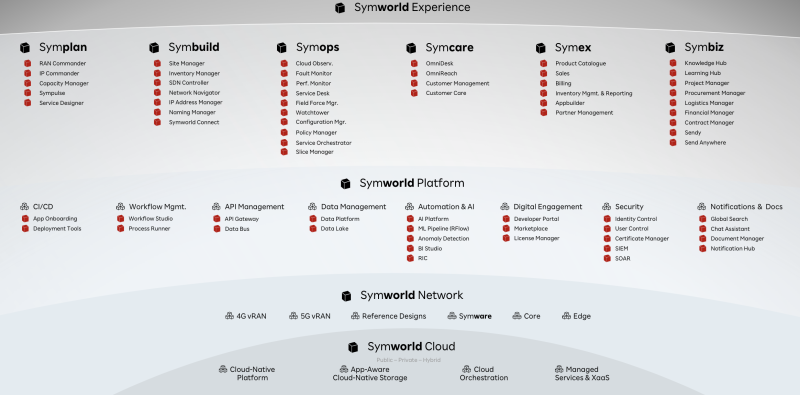The CEO of Rakuten Mobile and Rakuten Symphony Tareq Amin hosted a call with media yesterday, and one of the more interesting things he talked about was Rakuten’s plans for fixed wireless access (FWA).
He said Rakuten Mobile plans to launch FWA in Japan in December. “I’m just waiting for our CPE devices to arrive,” Amin said. “We have a bit of constraint and supply chain issues on CPE deliveries.”
He said Rakuten Mobile’s FWA will run on both Sub-6 GHz and mmWave spectrum “in one, nice, elegant CPE design for the home.”
While the press has been writing about Rakuten Mobile’s new wireless network for a few years, there hasn’t been much mention of its extensive fiber deployments. Amin said Rakuten will offer not only mobile service but also fiber-to-the-home (FTTP) and wireless-to-the home through FWA.
He also bragged about Rakuten’s 400 MHz of mmWave spectrum, and he said this trove of spectrum combined with the low $1,500 cost of its 5G base stations will serve its FWA plans very well.
“Our cost structure to deliver FWA to the house is going to be one of the lowest in the world,” said Amin.
Symworld app store
Rakuten Symphony — the mobile technology vendor spun out of Rakuten Mobile — made several acquisitions in the last few years, and now Amin says all the technologies are coming together via Symworld, which he describes as “a telecom app store.”
Companies whose products are rolled into the app store include Innoeye, which Rakuten acquired in 2020. Innoeye brought its operations support system (OSS) technology to Rakuten, along with about 1,300 employees. In 2021, Rakuten bought the open RAN vendor Altiostar.
And then this year, Rakuten acquired Robin.io. Amin called Robin.io “the last piece of my puzzle.”
Robin.io brought its multi-cloud mobility, automation and orchestration capabilities, which allow for the creation of cloud infrastructure from the edge to the central data center.
Amin said, “At this stage I don’t see any technical gaps in terms of achieving our needs.” With all the pieces of the puzzle in place, Rakuten Symphony is now promoting Symworld.

Symworld is currently being used by Rakuten Mobile and also by the service provider 1&1 in Germany. 1&1 is Rakuten Symphony’s first outside customer that is using its technology as a complete, integrated stack in a new greenfield network.
AT&T and Dish use Symworld
Both AT&T and Dish Wireless are also using Symworld on an ala-carte basis, picking particular technologies that they want. Of those relationships, Amin said, “We are well past lab tests, we are in the deployment phase in the U.S. The first customer is AT&T. We have a collaboration with Dish also.”
Earlier this year, Andre Fuetsch, network chief technology officer at AT&T, said, “Our collaboration with Rakuten Symphony helps expand and enhance the transformation of our network as well as across our global industry to build and operate more resilient networks in a new architecture stack with less manual touches.”
Yesterday, Amin said, “For AT&T what we have been partnering with them on is a network application modernization architecture for their wireless and wireline network, offered through a platform we call Site Manager. The Site Manager sits in this Symworld app store. And this is now in deployment. It’s definitely not a lab test.”
Of Dish, Amin said Dish is consuming an application out of the Symops category for OBS, an observability platform. It’s a modern architecture for cloud-native networks to remove the old way of doing fault management and move into real-time telemetry, even bypassing EMS systems.
Asked how Rakuten Symphony is doing, in general, in terms of garnering customers, Amin said it currently has 13 existing customers, and it has about 110 opportunities in its pipeline. About 55% of those prospective customers are interested in its virtual RAN technologies. Another 20% is most interested in “intelligent operation” and another 19% is interested in an “end-to-end opportunity." Amin said of the majority of customers, which are interested in vRAN, “it’s all about Altiostar.”
Gunning for new subscribers
Rakuten Mobile currently has 5.8 million customers, and it’s making some changes to its rate plans to try and tap into more synergies with the larger Rakuten Group ecommerce business. When Rakuten Mobile first rolled out its network, it incentivized people to sign up by offering promotions for free subscriptions. But now, it will entice people to sign up by offering points for discounts on ecommerce products and services.
Amin said, “The business model of Rakuten has nothing to do with just connectivity. It has everything to do with ecosystem. Rakuten is an internet services company before we are a mobile company.”
Of course, Rakuten wants its mobile business to be profitable, but it will leverage mobile to cross-sell other products and services.